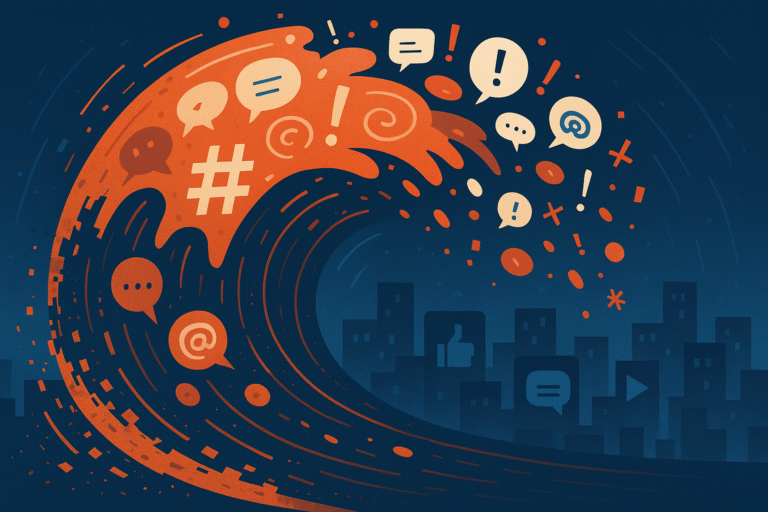Vaccine Disinformation- What Does it Really Mean?
As the world begins to deploy COVID-19 vaccinations, the news is flooded with articles about the threat of vaccine disinformation. These articles claim that fake news and disinformation surrounding the vaccines is rampant and influencing the public’s view of the vaccine. However, what remains unclear is where this disinformation comes from, how it spreads and what the motivations are behind it?
We’ll tackle each of these questions step by step.
Social Media as a news source
Let’s first talk about the medium for where these conversations take place. As we know, social media today has significantly impacted the media landscape. The days of checking newspapers, local media outlets, or even simply google, are nearly obsolete for much of the public. Today, social media platforms, such as Facebook, Twitter and Instagram, have taken over news sources. This means that anyone on these platforms is now a source of news.
Social Media Users
Now, we can talk about who these sources are and their influence and reach.
There are the people that you know personally- your friends, family members and acquaintances. These may have similar outlooks as you- you likely have what in common. Oftentimes, we trust these sources- you know where they come from and what they represent.
Public figures are another category. These can be celebrities, politicians, business leaders or influencers. These figures can have the power to influence the decisions that we each make each day- this can be anything from political views to the shampoo that you should use.
We also have social media accounts used by media outlets that share their articles. While reliable media outlets are active on these platforms, non reliable sources have the ability to become just as active and influential.
Lastly, we have fake profiles. These include fake users, avatars, bots, sockpuppets and actual real people who are paid to promote specific agendas. These profiles are used to spread and amplify messages or information.
While fake profiles are seemingly the more obvious source of false information, the other categories can often be equally, if not more, dangerous. Public figures, influencers, friends and acquaintances are real people that are sources of any and all information- real or fake.
See where the problem begins?
Now that we understand the different sources of information, we need to understand what these sources are capable of.
Fake news, Disinformation and Misinformation
To further understand the problem, we need to define what fake news, disinformation and misinformation, a less popular phrase, really means. While these all fall under the category of false information, each phrase is distinct and carries important differentiations that are often missed.
Misinformation is false information that is spread deliberately or accidentally, regardless of the motivations behind it.
Disinformation is false information that is deliberately biased, fabricated or misleading. This can be manipulated narratives, facts or propaganda.
Lastly, fake news is false information that is purposefully created in a format that copies mainstream media to spread misinformation, conspiracy theories or hoaxes. Sometimes, these messages are not directly fabrications, but rather sensational, emotionally charged or misleading false information.
Each of these examples of false information pose threats. While some false information on social media can be spotted (that’s a conversation for another blog!), the more “trusted” a source is, the higher the risk
Types of Vaccine Disinformation
Now that we understand both the different categories of social media as well as the different types of false information, we can return to our original topic- vaccine disinformation.
As we know, one of the most globally discussed topics is the pandemic, creating an overabundance of information. This means that parties interested in this topic- and I believe it’s safe to say that this is a large percentage of the population- are susceptible to consuming false information.
As the pandemic conversation has turned to vaccines, we are witnessing an increase in the spread of false information. Some of this information is spread both by malicious social media users as well as altruistic users.
Here are some examples of the reasoning behind the social media users spreading COVID-19 vaccine misinformation:
- Exploitation: People want to make money. By hooking readers into information about the vaccine, they can advertise their own agendas in connection to vaccines. For instance, Cyabra identified a campaign of fake profiles on Facebook that exploited the online interest in COVID-19 to advertise Bitcoin.
- Answers: When times are hard, people want answers. They look for comfort in reasons and explanations about what is happening. This is a feeding ground for conspiracy theories to thrive, which has led many to believe that the virus is a way for world leader’s to control their citizens.
- Community: People like to feel that they belong. They seek connections and by attaching themselves to an idea or opinion and engaging in social media conversations, they become a part of a community. Many social media users will seek out these communities to feel a purpose.
COVID-19 has brought out the vulnerability in all of us. Unfortunately, this leads to an environment where false information spreads, and spreads fast. And social media can be a hotbed for this.
The Dangers
Now that we understand what vaccine disinformation really means, it’s important to highlight its dangers. Put simply, mistrust and confusion causes vaccine hesitancy, leaving efforts to end the pandemic that has killed 1.85 million people in severe danger.
The infodemic is our latest public health threat, and we need to stop it.
Cyabra is actively monitoring the social media conversations surrounding COVID-19. Our latest report on vaccine disinformation details our findings.


